The smartphone is able to replace a lot of the things we use to need. Alarm clocks, GPS devices, cameras, mail delivery, televisions, radios, tape recorders, record players, calculators, guitar tuners, pedometers — the list goes on and on.
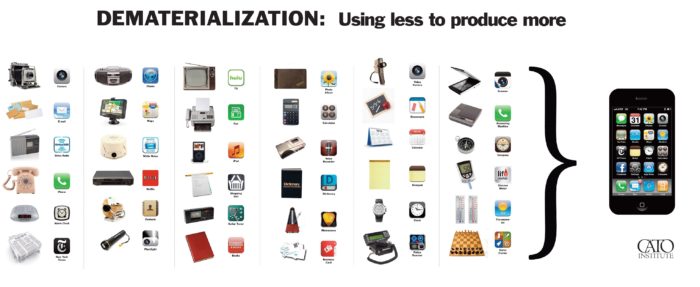
The next-generation augmented and virtual reality headset, which looks like a pair of sunglasses, promises to add even more things to this list.
That’s not to say that the devices will no longer be used at all. People still buy cameras, enough there are cameras in their phones. People still buy newspapers, magazines, and printed books. It’s rare that a new medium completely destroys an old one. After all, we still have live concerts and movie theaters. We still create and buy sculptures and paintings.
What the new mixed reality headsets will do is replace the low-end, commodity versions of those things. The traditional alternatives will remain but will be aimed at the high-end markets, the collectors, and people who want to have special experiences.
One thing is for sure, though. The world is going to look a lot different when mixed reality glasses — or contact lenses — become ubiquitous.
1. Large-screen TVs
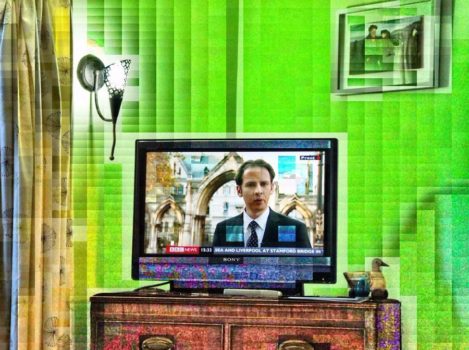
Why spend thousands on a big television for your living room when you can download an app to your glasses that will create the illusion of it? And if your friends and relatives have the same app they, too, will be able to see the TV.
Replacing the TV becomes so much easier — just download a new app. You’ll never have to move it, or risk breaking it when you get mad and start throwing things. You can even have a little virtual remote control appear in your hand, if you don’t like using gestures and voice commands to interact with it.
2. Home videos

Why just watch a video of your kid’s first birthday party when you can pull up a virtual reality version of the event and step back in time?
Cheap storage and ubiquitous 3D cameras means that you can relive any moment of the past, or share them with your relatives.
3. Office buildings

Telecommuting isn’t for everyone. Sometimes, you want face-to-face meetings. I work at home, and I start quickly start craving human interaction. I daydream about getting dressed in the morning, attending meetings, gossiping with co-workers, brainstorming in front of white boards, and flirting with the cute people in the office next door.
With virtual reality, my home office can be instantly transported into a virtual office building, where I can interact with colleagues, customers, vendors, and other real people.
Automatic filters will make me look younger, remove the coffee stains from the front of my shirt, and let me wear ridiculous heels without the usual ridiculous pain.
4. Computer monitors
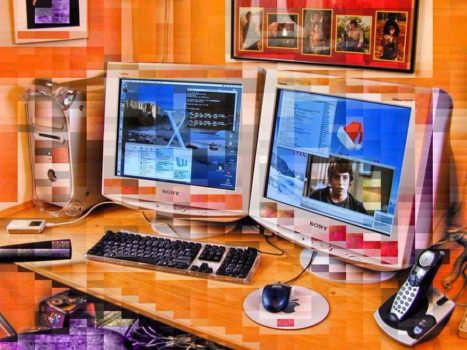
I currently have two big monitors on my desk. But why stop at two? I can have as many monitors as I want, position them for maximum comfort, and make them disappear when I no longer need them.
5. Ebook readers

There’s really no need to have a dedicated ebook reader when a quick wave of your hands or a whispered command will instantly put one in your hands, or even float it in the air in front of you. And of course, there’s no need for it to look like an ebook reader. It could look like an actual book, or a magazine.
6. Blackboards and whiteboards

Schools, offices, research labs, and police stations can save money by switching to virtual whiteboards, blackboards, and corkboards. Plus, built-in access controls would ensure that unauthorized people wouldn’t be able to see them.
7. Telescopes and binoculars

As the built-in cameras on the headsets improve, we’ll be able to see farther and clearer than ever before. The images can be further enhanced with data from other accessible cameras in the area. And if direction of view needs to be exact, a virtual telescope could appear with all the necessary dials and settings. A million-dollar piece of equipment could be replaced a 99 cent app.
8. Microscopes
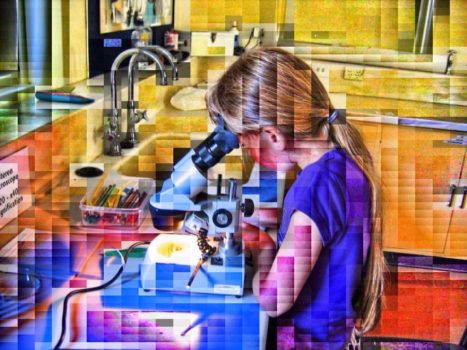
Basic microscopes will easily be replaced by their virtual equivalents, though the most advanced ones, such, as, say, scanning tunneling microscopes, will probably still require specialized physical equipment for a long time.
9. Night-vision goggles
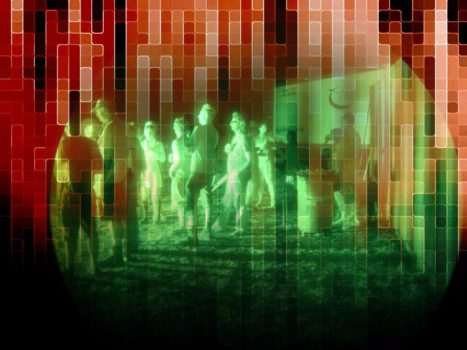
No more need for flashlights, either. The virtual reality headsets can automatically adjust the brightness of the image.
10. Paintball guns

Why spent money on paint balls and cleaning supplies when it can all be virtual? Plus, no worries about getting your eyes, nose, mouth or ears filled with paint.
11. Windows

Windows let in both heat and cold, and pose security risks. Eliminating windows on airplanes, trains, cars and other vehicles would make them safe and more efficient. Replacing real windows with virtual ones in apartments would allow any room, including ones on the interior of the building or under ground, to have a view of the world outside — or of any other desired location.
12. Home accessories and decorations
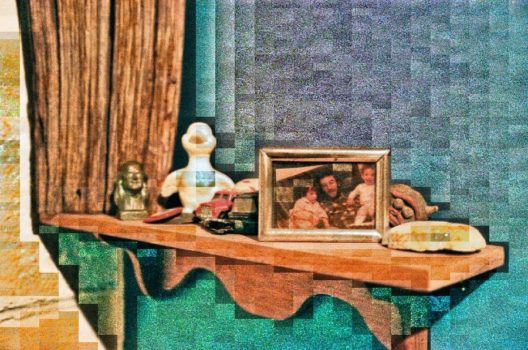
People will still collect unique paintings, sculptures, furnishing and other high-end items. However, many commodity objects can easy be replaced by their virtual equivalents. Posters, photo frames, knickknacks, chandeliers, sconces, candle sticks, wall paper, fancy floor tiles, curtains, decorative plants and fishtanks and other home accessories can be replaced by their virtual doubles.
13. Lights
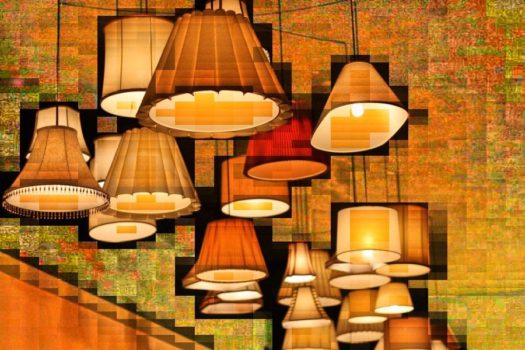
With our view of the world around us moderated by our headsets, there’s no need to have anything more than the most basic lights. Instead, every individual in a particular location would experience the level of lighting that they prefer.
14. Billboards

Putting up and maintaining a physical billboard takes time and money. A virtual billboard, however, would only require the viewer’s permission. Advertising companies will make deals with app vendors and other content providers in an effort to create advertising that their potential customers would actually want to see. If the ads get too intrusive, the users will just delete those apps, switch to premium, ad-free versions, or install ad blockers.
15. Prescription glasses and contact lenses
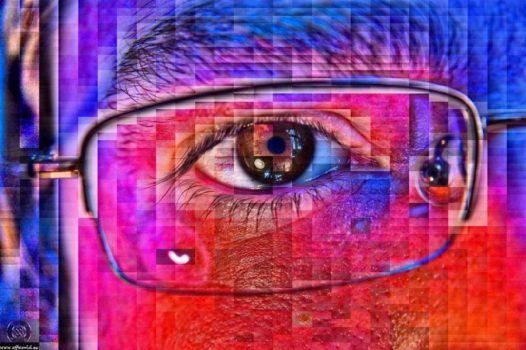
If you’re already wearing a headset that can instantly adjust focus for you, there’s no need for prescription eyewear. In fact, most of the tests conducted by an optometrist can be replaced by apps, improving overall vision for everyone. Until, of course, topical genetic therapies give us all perfect eyesight.
16. Decks of cards

Have you ever wanted to play a quick game of cards, but had no deck on you? If the game you wanted to play was solitaire, there are already apps for it on your smartphone. But other games, the kind you play with your friends, don’t always lend themselves as well to being played on a cellphone screen.
Augmented reality will let you shuffle cards, deal, and hold your cards in your hand as if you were playing with the paper versions.
17. Secretaries

Many jobs that secretaries used to do have already gone away. We do our own typing, record our own expenses, and plan our own trips. We have voice mail to take messages for us and pay our bills electronically. We use digital assistants like Siri to take dictation, look up things on the Internet, and send text messages.
Locks and keys

We’re already seeing some keys replaced by remote-control fobs, or smartphone apps. Augmented reality applications could replace both of these, as well as all other remote controls, dials, buttons, and so on.
- OSgrid back online after extended maintenance - April 16, 2025
- Analysts predict drop in headset sales this year - March 25, 2025
- OSgrid enters immediate long-term maintenance - March 5, 2025
